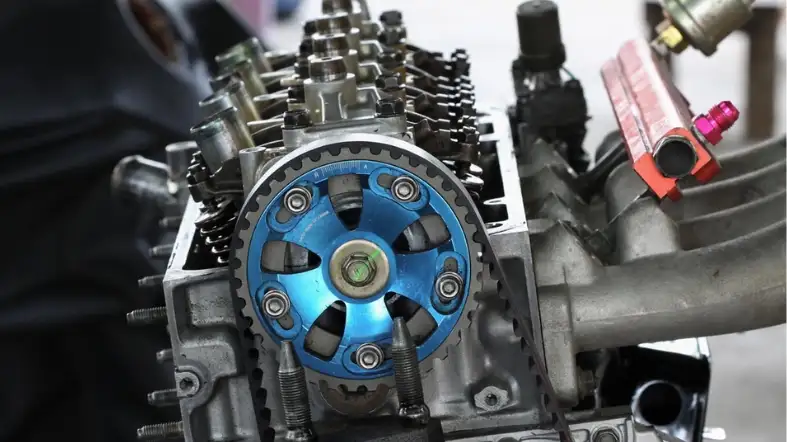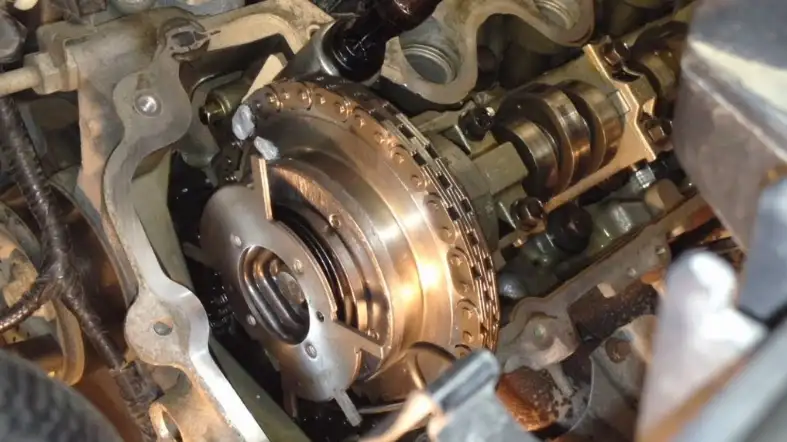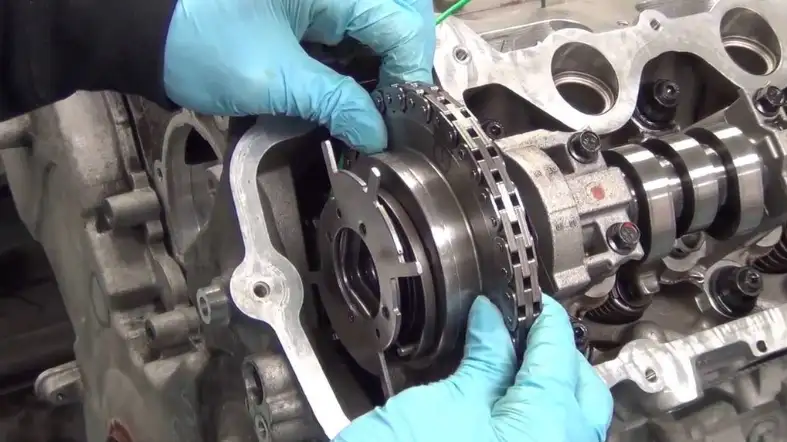Have you ever been driving down the road, and your car starts making an unusual rattling noise?
You might have ignored it at first, hoping it would go away, but as you keep driving, the noise only seems to get louder.
It’s possible that your car’s cam phasers are to blame, and you’re left wondering how long you can continue to drive with this issue.
Well, there are several factors to consider, and we’re here to help you understand what’s going on under the hood of your car.
In this blog post, we’ll dive into the world of cam phasers, and discuss just how long you can keep driving with them in bad shape.
How long can you drive with bad cam phasers?
You can keep driving your vehicle with faulty cam phasers until the engine stops working. While you might be able to drive for a short time with bad cam phasers, it’s not a good idea to ignore the issue for too long.

If left unchecked, bad cam phasers can cause engine damage, which can be expensive and time-consuming to repair.
What happens when cam phasers fail?
When cam phasers fail, it can cause several problems that can affect the engine’s performance and longevity.
Let’s discuss in more detail what happens when cam phasers fail:
1. Engine performance issues:
One of the most common symptoms of a failing cam phaser is a decrease in engine performance.
This can manifest as reduced power output, slower acceleration, and a general lack of responsiveness.
This happens because the cam phaser is not adjusting the camshaft position correctly, which can cause the valves to open and close at the wrong times.
2. Rough engine idling:
Another common symptom of a failing cam phaser is a rough or uneven engine idle.
This can happen because the cam phaser is not able to adjust the camshaft position correctly at idle, causing the engine to shake or vibrate.
3. Check engine light:
In some cases, a failing cam phaser can trigger the check engine light to come on.
This happens because the engine control module detects a problem with the camshaft position sensor, which is often associated with cam phaser failure.
4. Engine misfires:
A failing cam phaser can also cause engine misfires, which happen when one or more cylinders do not ignite properly.
This can happen because the cam phaser is not able to adjust the camshaft position correctly, causing the valves to open and close at the wrong times.
5. Engine damage:
In severe cases, cam phaser failure can lead to engine damage. This can happen if the camshaft is not timed correctly, causing the valves to collide with the pistons.
This can result in bent valves, damaged pistons, and even catastrophic engine failure.
What are the causes of bad cam phasers?

When the cam phasers go bad, it can cause a variety of issues such as reduced engine performance, fuel efficiency, and in some cases, complete engine failure. Here are some of the most common causes of bad cam phasers:
1. Wear and Tear:
Like any other mechanical component, cam phasers can wear out over time. This is especially true for high-mileage engines that have been used for a long time.
The constant movement and stress on the phasers can cause them to wear out, leading to reduced performance and fuel efficiency.
2. Lack of Maintenance:
Regular engine maintenance is crucial to keeping all its components in good working condition.
If an engine is not regularly maintained, it can lead to a buildup of sludge, debris, and other contaminants in the oil passages that can cause the phasers to fail.
3. Poor-Quality Oil:
Using low-quality or incorrect oil can cause damage to the cam phasers.
The oil that flows through the engine helps to lubricate and protect the components from wear and tear.
If the oil is not of the correct viscosity, it can cause damage to the phasers, leading to their failure.
4. Incorrect Timing:
Proper timing is essential for the efficient operation of an engine.
If the cam phasers are not timed correctly, it can cause them to work harder than they should, leading to accelerated wear and tear.
5. Manufacturing Defects:
Sometimes, cam phasers can fail due to manufacturing defects. This is rare, but it can happen. In such cases, the only solution is to replace the defective component.
6. Overheating:
Overheating of the engine can cause the cam phasers to fail.
This can happen due to a variety of reasons, such as a faulty thermostat, a malfunctioning water pump, or a damaged radiator.
When the engine overheats, it can cause the phasers to warp or become misaligned, leading to their failure.
What should you do if you suspect bad cam phasers?

If you suspect that your vehicle’s cam phasers are going bad, there are a few things you can do to diagnose and potentially fix the issue. Here are some steps you can take:
1. Pay attention to the sound of your engine:
One of the most common symptoms of failing cam phasers is a rattling or ticking sound coming from the engine.
If you notice this noise, it’s important to take action before the problem gets worse.
2. Check for warning lights:
Another indicator that something may be wrong with your cam phasers is if your check engine light comes on.
This can be caused by a number of issues, so it’s important to have your vehicle checked by a professional to determine the root cause.
3. Inspect the cam phasers:
If you’re comfortable working on your vehicle, you can inspect the cam phasers yourself to see if there are any visible signs of wear or damage.
Look for things like metal shavings, cracks, or signs of corrosion.
4. Have a mechanic perform a diagnostic:
If you’re unsure about what’s causing the issue, it’s always a good idea to take your vehicle to a qualified mechanic.
They can perform a diagnostic to determine if the problem is true with the cam phasers, and they can provide recommendations for repairs.
5. Replace the cam phasers:
If your mechanic determines that your cam phasers are the source of the problem, they will likely recommend replacing them.
This can be a complex and costly repair, but it’s important to get it done in order to prevent further damage to your engine.
How to prevent cam phasers from going bad?
Over time, these phasers can go bad, leading to various engine problems.
Fortunately, there are ways to prevent cam phasers from going bad, which can help you save time and money on repairs. Here are some tips:
1. Regular oil changes:
One of the most important things you can do to prevent cam phasers from going bad is to keep up with your vehicle’s oil changes.
Dirty oil can cause the phasers to malfunction, leading to various engine problems.
2. Use high-quality oil:
In addition to changing your oil regularly, it’s essential to use high-quality oil in your engine.
Cheap or low-quality oil can cause the phasers to wear out more quickly, leading to premature failure.
3. Avoid short trips:
Short trips can be hard on your engine, and they can cause the phasers to wear out faster.
If possible, try to combine your errands into longer trips to give your engine time to warm up and operate at optimal levels.
4. Avoid high RPMs:
Running your engine at high RPMs can cause the phasers to wear out more quickly.
Try to avoid revving your engine unnecessarily and keep your RPMs within the recommended range.
5. Keep your engine clean:
Dirt and debris can cause the phasers to malfunction, so it’s essential to keep your engine clean.
Regularly clean your engine bay and keep it free of dirt, leaves, and other debris.
6. Listen for strange engine noises:
If you hear any unusual engine noises, such as knocking or ticking, it’s essential to have your vehicle checked out by a mechanic. These noises could indicate a problem with your cam phasers or another engine component.
FAQs
1. What Are Cam Phasers And What Do They Do?
Cam phasers are a part of the engine’s timing system that controls the timing of the engine’s valves.
They help ensure that the valves open and close at the right time to maximize engine performance and efficiency.
2. What Are The Symptoms Of Bad Cam Phasers?
Some common symptoms of bad cam phasers include a rough idle, poor acceleration, decreased fuel efficiency, and a check engine light.
You may also notice a ticking or knocking noise coming from the engine.
3. Can I Drive With Bad Cam Phasers?
It’s generally not recommended to drive with bad cam phasers for an extended period of time.
Ignoring the issue can lead to further damage to your engine and potentially cause it to fail completely.
4. How Much Does It Cost To Fix Bad Cam Phasers?
The cost of fixing bad cam phasers can vary depending on the make and model of your vehicle, as well as the severity of the issue.
In general, it can cost anywhere from a few hundred to several thousand dollars to fix.
5. Can I Fix Bad Cam Phasers Myself?
Fixing bad cam phasers can be a complicated and involved process, so it’s generally not recommended to try to do it yourself unless you have experience working on engines.
It’s best to take your vehicle to a qualified mechanic who can diagnose and fix the issue properly.
Conclusion
Driving with bad cam phasers can be a risky proposition. While it may be possible to continue driving with faulty cam phasers for a short period of time, the longer you wait to address the issue, the more damage you may cause to your engine.
Ignoring the warning signs can lead to decreased fuel efficiency, loss of power, and potential engine failure.
It’s always best to address the issue as soon as possible to avoid further damage and potentially costly repairs.
So, if you suspect your cam phasers are faulty, don’t delay – take your vehicle to a trusted mechanic and have it inspected and repaired as soon as possible.
